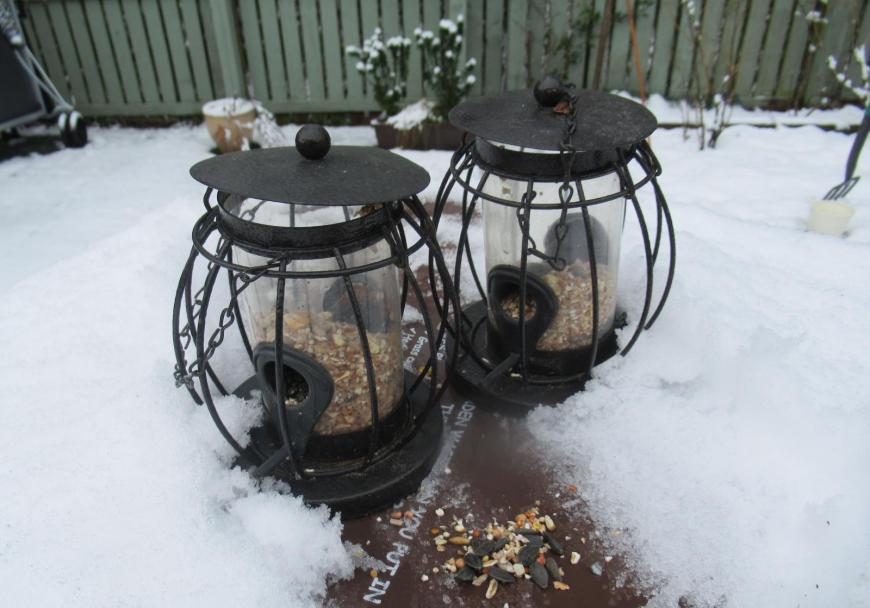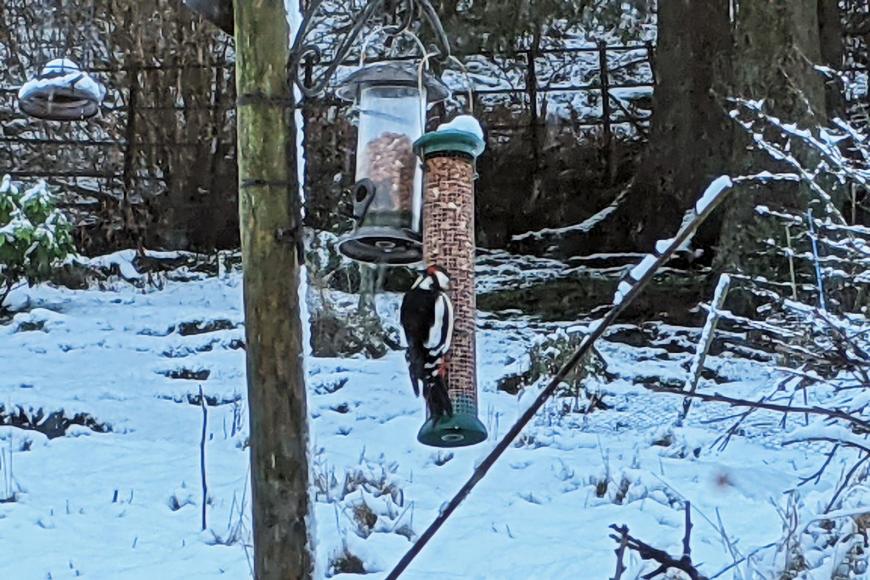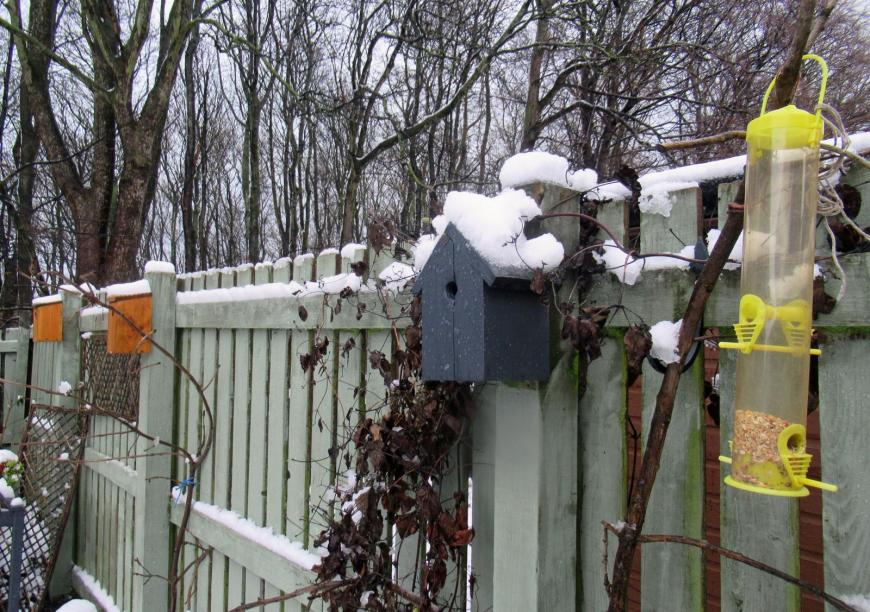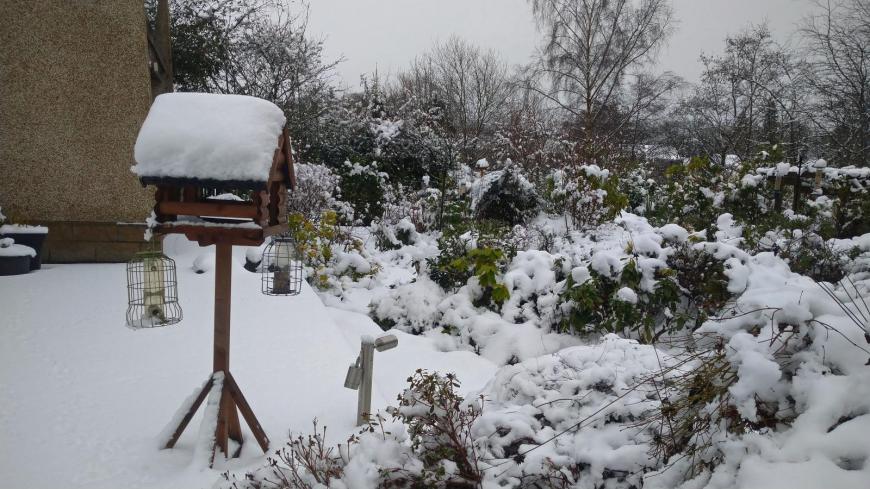
The recent snow has caused excitement for some and others, just something different to look at out of the window as January drags on. But the colder weather, ice and snow mean that garden birds struggle for food, water and shelter and could do with a bit of help.
This might be with easily accessible yet suitable food as the countryside supplies of seeds and insects disappear in winter and the birds, like us need more energy to stay warm. The shorter days also give them less time to forage in daylight.

For the last weekend of this month, the RSPB invites people to join their annual Big Garden Birdwatch to record bird numbers from their own homes, so an ideal lockdown activity. It is the world’s largest wildlife survey and in the run-up with this cold weather, it might be a good time to take care of the birds before the event. Making some bird feeders, fat balls or just filling the feeders could be a good excuse to get outside to combine with remote-learning sledging or snowman building.
You may have already seen some busyness in your garden, small birds inspecting nest boxes, maybe even carrying bits back and forth. The breeding season doesn’t start until February but with climate change, we are seeing some birds nesting earlier and earlier – “blackbirds have been recorded nesting as early as January” RSPB
The results are gathered in February with a report released in April. In 2019/20, the winter was wetter and warmer than average which helped small garden birds. The house sparrow remained the highest-ranked bird, blue tit second, both seen in around 80% of gardens but there were also encouraging increases in less common species. The ‘Beast from the East’ 2018 had a tremendous toll on the numbers of long-tailed tits.
“Small birds suffer during long, cold winters but the warmer January (2020) weather this year appears to have given species such as the wren and long-tailed tit a boost,” says RSPB conservation scientist Daniel Hayhow.
Winter in meteorological statistical terms is Dec/Jan/Feb and so far, December was wetter than average with average temperatures. After the recent flooding, January 2021 looks to be wetter than average too. The garden information which households send in online gives a valuable picture of UK birds at a similar time each year.

What can you do to help and maybe make the garden a more welcoming place for birds?
Advice from the RSPB: YES: Kitchen scraps like mild grated cheese, bruised fruit (not mouldy), cooked rice, unsalted bits of hard fat, roast potatoes and dry porridge go down a treat with garden birds. calorie-rich foods like mixed seed, sunflower seed, Nyjer seed and good quality peanuts.
NO: There are some foods you should avoid as they can be dangerous for birds. Cooking fat from the roast mixes with meat juices during cooking to make a runny, greasy mixture. This sticks to feathers and stops them from being waterproof. Other foods to avoid are dried coconut, cooked porridge oats, milk, and mouldy or salted food.
Fresh water for drinking and bathing, make sure it’s not frozen over with these sub-zero temperatures. Of course, some areas have too much water after recent flooding.
Dense hedges and evergreens give shelter to birds as do nest boxes. Birds will be scoping out the best nesting locations from November and can shelter inside on the coldest nights so if you have boxes sitting waiting to be put up, maybe get to it.

Putting food out in your garden is supplementary feeding, "the provision of supplementary food has been shown to improve overwinter survival in a number of species." The British Trust for Ornithology has some good practical advice:
“offering a variety of foods from trusted sources in different locations around the garden, feeding little and often so that food isn’t exposed to the elements for long periods, and ensuring that feeders are cleaned and moved regularly to avoid an accumulation of waste food or bird droppings.”
All this may be completely pointless, if like me you have gorging squirrels who come and eat absolutely everything the minute it is out. There are some suggestions but the local Olympian gymnasts that run in from the woods and then saunter off if disturbed seem unbothered by anything I try. Hopefully, the blue tits will return to nest this spring, although as much time to watch them isn't needed this year, thinking back to lockdown 1.

It is too late to get a postal sheet, but it can be downloaded here, to record your results. One hour to watch from Friday 29th Sunday 31st.
Only include those birds that land, not those flying over. Importantly, count the most birds you see at any one time – otherwise, you could count the same bird twice.
So, if 3 pigeons land in your garden you note 3 down. If they go and half an hour later 2 pigeons appear, you leave the total at 3. Submit your results by 15th February.
This week’s weather starts off cold and frosty, but the week becomes unsettled with rain from the Atlantic, and not as cold in the south.
Robin image - RSPB credit Liz Mitchell
Loading recent activity...